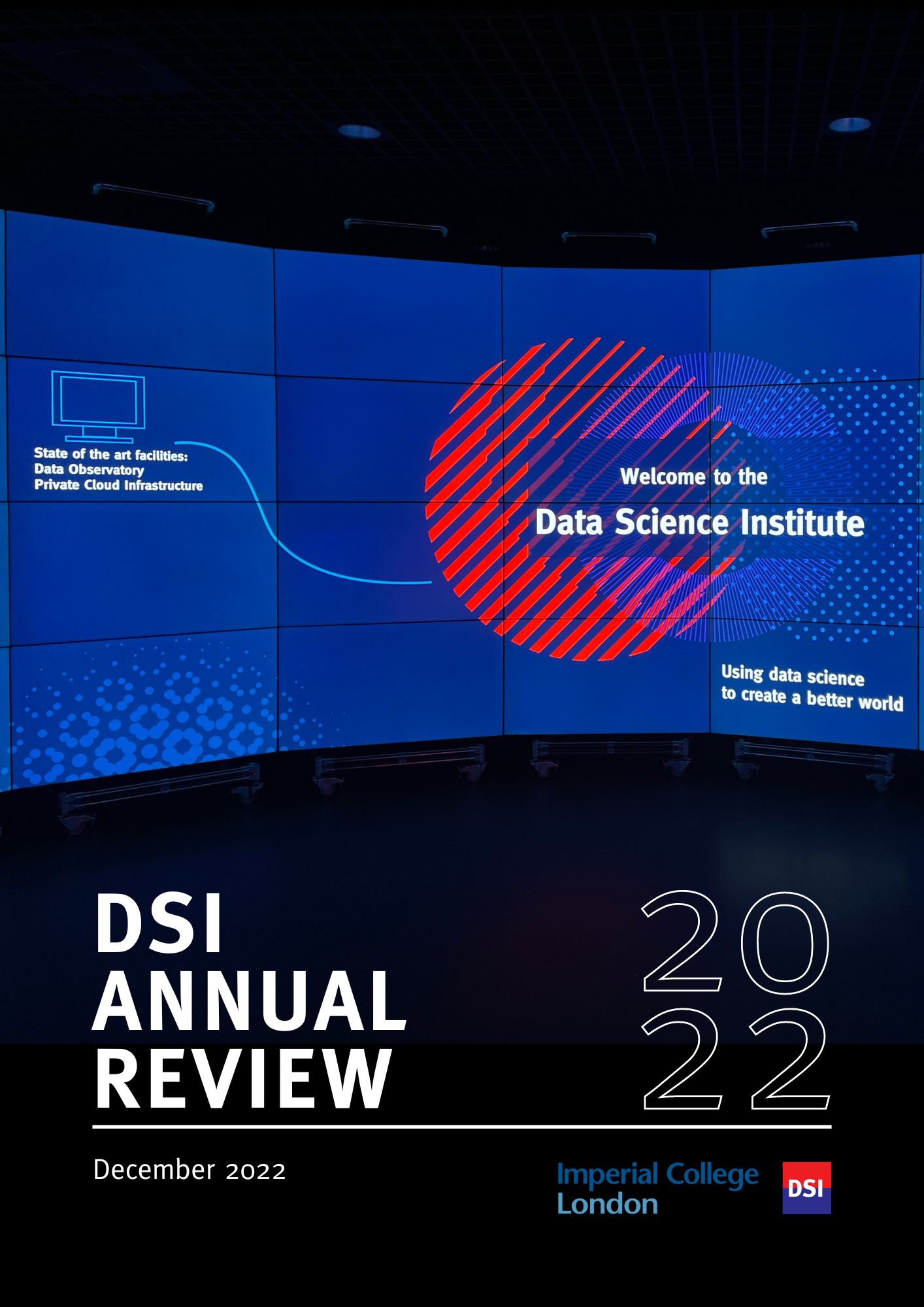Publications from our Researchers
Several of our current PhD candidates and fellow researchers at the Data Science Institute have published, or in the proccess of publishing, papers to present their research.
Results
- Showing results for:
- Reset all filters
Search results
-
Conference paperStougiannis A, Tauheed F, Heinis T, et al., 2013,
Accelerating spatial range queries
, Pages: 713-716 -
Conference paperTauheed F, Nobari S, Biveinis L, et al., 2013,
Computational Neuroscience Breakthroughs through Innovative Data Management
, Pages: 14-27 -
Journal articleDalby AR, Emam I, Franke R, 2012,
Analysis of Gene Expression Data from Non-Small Cell Lung Carcinoma Cell Lines Reveals Distinct Sub-Classes from Those Identified at the Phenotype Level
, PLOS ONE, Vol: 7, ISSN: 1932-6203- Author Web Link
- Cite
- Citations: 1
-
Journal articleYang X, Han R, Guo Y, et al., 2012,
Modelling and performance analysis of clinical pathways using the stochastic process algebra PEPA
, Bmc Bioinformatics, Vol: 13, ISSN: 1471-2105 -
Conference paperHolehouse A, Yang X, Adcock I, et al., 2012,
Developing a novel integrated model of p38 MAPK and glucocorticoid signalling pathways
, Pages: 69-76 -
Journal articleParkinson H, Sarkans U, Kolesnikov N, et al., 2011,
ArrayExpress update-an archive of microarray and high-throughput sequencing-based functional genomics experiments
, NUCLEIC ACIDS RESEARCH, Vol: 39, Pages: D1002-D1004, ISSN: 0305-1048- Author Web Link
- Cite
- Citations: 241
-
Journal articleHuntley DM, Pandis I, Butcher SA, et al., 2010,
Bioinformatic analysis of <i>Entamoeba histolytica</i> SINE1 elements
, BMC GENOMICS, Vol: 11, ISSN: 1471-2164- Author Web Link
- Cite
- Citations: 11
-
Journal articleKapushesky M, Emam I, Holloway E, et al., 2010,
Gene Expression Atlas at the European Bioinformatics Institute
, NUCLEIC ACIDS RESEARCH, Vol: 38, Pages: D690-D698, ISSN: 0305-1048- Author Web Link
- Cite
- Citations: 163
-
Journal articleCurcin V, Ghanem M, Guo Y, 2010,
Polymorphic type framework for scientific workflows with relational data model
, International Journal of Business Process Integration and Management, Vol: 5, Pages: 45+-45+, ISSN: 1741-8763 -
Journal articleCurcin V, Ghanem M, Guo Y, 2010,
The design and implementation of a workflow analysis tool
, Philosophical Transactions of the Royal Society A: Mathematical, Physical and Engineering Sciences, Vol: 368, Pages: 4193-4208 -
Journal articleWang FZ, Helian N, Wu S, et al., 2009,
Eight Times Acceleration of Geospatial Data Archiving and Distribution on the Grids (vol 47, pg 1444, 2009)
, IEEE TRANSACTIONS ON GEOSCIENCE AND REMOTE SENSING, Vol: 47, Pages: 2988-2988, ISSN: 0196-2892 -
Journal articleParkinson H, Kapushesky M, Kolesnikov N, et al., 2009,
ArrayExpress update-from an archive of functional genomics experiments to the atlas of gene expression
, NUCLEIC ACIDS RESEARCH, Vol: 37, Pages: D868-D872, ISSN: 0305-1048- Author Web Link
- Cite
- Citations: 313
-
Journal articleCurcin V, Ghanem M, Guo Y, 2009,
Analysing scientific workflows with Computational Tree Logic. Journal of Cluster Computing
, Journal of Cluster Computing: Special Issue of Recent Advances in e-Science, ISSN: 1386-7857Motivated by the widespread use of workflow systems in e-Science applications, this article introduces a formal analysis framework for the verification and profiling of the control flow aspects of scientific workflows. The framework relies on process algebras that characterise each workflow component with a process behaviour, which is then used to build a CTL state model that can be reasoned about. We demonstrate the benefits of the approach by modelling the control flow behaviour of the Discovery Net system, one of the earliest workflow-based e-Science systems, and present how some key properties of workflows and individual service utilisation can be queried at design time. Our approach is generic and can be applied easily to modelling workflows developed in any other system. It also provides a formal basis for the comparison of control aspects of e-Science workflow systems and a design method for future systems.
-
Conference paperCurcin V, Ghanem M, Guo Y, et al., 2008,
Mining adverse drug reactions with e-science workflows.
, Proceedings of the 4th Cairo International Biomedical Engineering Conference, 2008. CIBEC 2008 -
Book chapterGhanem M, Curcin V, Wendel P, et al., 2008,
Building and using analytical workflows in Discovery Net
, Data Mining Techniques in Grid Environments. Dubitzky, Werner (Ed)., Publisher: Wiley-Blackwell, Pages: 119-140, ISBN: 9780470512586The Discovery Net platform is built around a workflow model for integrating distributed data sources and analytical tools. The platform was originally designed to support the design and execution of distributed data mining tasks within a grid-based environment. However, over the years it has evolved into a generic data analysis platform with applications in such diverse areas as bioinformatics, cheminformatics, text mining and business intelligence. In this work we present our experience in designing the platform and map out the evolution paths for a workflow language, and its architecture, that need to address the requirements of different scientific domains.
This data is extracted from the Web of Science and reproduced under a licence from Thomson Reuters. You may not copy or re-distribute this data in whole or in part without the written consent of the Science business of Thomson Reuters.
Contact us
Data Science Institute
William Penney Laboratory
Imperial College London
South Kensington Campus
London SW7 2AZ
United Kingdom
Email us.
Sign up to our mailing list.
Follow us on Twitter, LinkedIn and Instagram.

